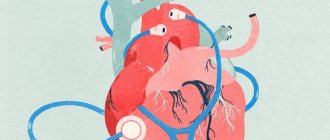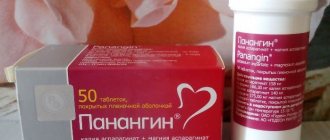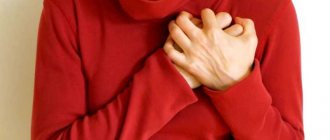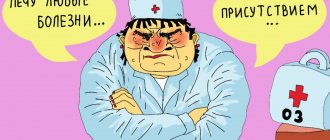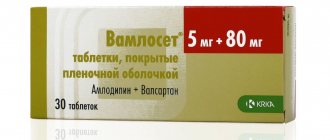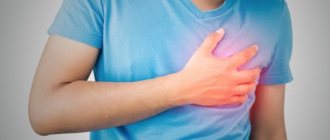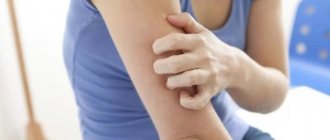Any disturbances in the rhythm, frequency, or sequence of heart contractions indicate arrhythmia. Tachycardia and bradycardia are its most common types, which in some cases are a variant of the norm, and in others indicate pathology. To determine the cause of heart rhythm disturbances, you should immediately consult a doctor. Because in some cases this condition is dangerous.
The pulse indicates the state of the cardiovascular system, and you can use it to learn about a person’s health.
Features of the structure of the human heart
First, let's look at the structure of the human heart. The heart is the central organ of the cardiovascular system. Provides blood circulation in the body with its rhythmic contractions. It is a hollow muscular organ divided into four chambers: the right and left atria and the right and left ventricles. Both the atria and ventricles are separated from each other by septa. The atria are cavities that receive blood from the veins and push it into the ventricles, which discharge it into the arteries. The right one goes into the pulmonary artery, the left one goes into the aorta. This way the blood flows into two circulation circles at once. The right and left chambers do not communicate with each other, and the atria and ventricles are connected by valves. The valves determine the direction of blood flow in the heart: from the veins to the atria, from the atria to the ventricles, from the ventricles to large blood vessels.
Any painful changes in the valves (rheumatic or other origin) disrupt the proper functioning of the heart and the entire body. When listening to the heart, the slamming of the valves and the contraction of its 4 chambers are perceived as heart sounds. With valve disease, instead of tones or along with them, noises are heard due to the narrowing of their openings.
The heart muscle is penetrated by a large number of sensory nerves. Which regulate cardiac activity, but also cause severe pain in case of any disruption of the blood supply.
Tachycardia with bradycardia
Deviation from normal heart rhythm can be a manifestation of a serious disease in the human body such as tachycardia and bradycardia. The resulting painful condition brings constant discomfort, which requires a thorough examination and further competent medical treatment.
Pulse rates
The main criterion for the health of the heart muscle is an even pulse (oscillation of the walls of the arteries when filled with blood), the same frequency, without fading. The norm in a calm state is from 60 to 100 beats per minute.
Moreover, these indicators depend on the age, gender and build of the person; differences in indicators within the same age category are not excluded.
The heart rate increases with high blood pressure, which indicates blockage of blood vessels with atherosclerotic plaques. The higher the pulse, the greater the risk to human health.
Causes of bradycardia
Bradycardia is an arrhythmia with a slow heartbeat. Its manifestation is a low pulse of up to 50 beats per minute or less. Most often, problems arise when there is a malfunction of the sinus node, which is located at the point where the vena cava enters the right atrium.
Sometimes the cause of the failure is damage to the vagus nerve. Such attacks occur more often at night after physical exercise or overeating; in medicine this type is called parasympathetic bradycardia.
The pulse can slow down even in a healthy person due to prolonged hypothermia.
If bradycardia does not cause negative symptoms in patients and does not lead to complications, it is a physiological form of the disease.
For athletes, such a frequency of myocardial contractions is not a pathology.
This form can often be found in young healthy people and even athletes, whose circulatory system is so efficient that even with weak beats per minute it does not lead to hypoxia (lack of oxygen). The cause of bradycardia may be:
- taking medications and when they are discontinued, the usual rhythm will be automatically restored;
- age-related changes in which certain areas of the myocardium refuse to function.
Cause of tachycardia
The opposite of bradycardia is tachycardia with its heart rate of up to 100 or more per minute, which can be divided into 2 main types:
- Supraventricular - which is characterized by increased pulsation in the atrium. They arise as a consequence of heavy physical activity, but are considered normal and do not require treatment.
- Ventricular - a violation of intraventricular conduction, the most dangerous type of arrhythmia. This is a long QT syndrome, ventricular fibrillation and flutter, in which the normal state is replaced by chaotic, strong contraction of the ventricles. Extrasystomia is divided into classes depending on severity. These types are divided into subtypes - stable, which is worse because it causes fainting, and unstable, with a duration of no more than 30 seconds.
Symptoms of the disease
A slow heartbeat is characterized by a decrease in pulse rate.
Incipient bradycardia can be recognized by characteristic clinical manifestations - slow pulse, dizziness, darkening of the eyes, fainting, general weakness, a steady decrease in blood pressure, exertional angina.
For a more accurate diagnosis, the patient is referred to an ECG or a 24-hour Holter study.
Characteristic symptoms of tachycardia are considered to be frequent heartbeats, a feeling of weakness, dizziness, a feeling of lack of air, a feeling of fainting, the development of symptoms of diseases at the same time is possible, but these are isolated cases that require additional tests and further surgical medical intervention.
How is it measured?
You can identify bradycardia yourself. To do this, you need to feel the pulse on your wrist or neck and count the beats per minute. If the number of heartbeats is less than acceptable according to standards, you need to consult a therapist to find out the reasons and subsequent treatment.
Examinations to determine the causes include listening to heart sounds, ECG, and phonocardiography. To identify the pathological type of bradycardia, an exercise test is performed and subsequent measurement of the pulse. When the diagnosis is confirmed and the causes of the rhythm disturbance are established, additional laboratory diagnostic methods are prescribed.
Only a cardiologist can prescribe treatment for cardiac tachycardia; for this you should do the following:
In order to correctly diagnose and prescribe the correct therapy, the attending physician refers the patient to a Holter ECG.
- ECG (daily Holter, with monitoring for up to three days);
- blood and urine tests;
- analysis to determine the content of hormones in the thyroid gland;
- Ultrasound of the heart, which shows abnormalities in the structure of the organ or cardiac sections;
- echocardiography.
What is cardiac arrhythmia, its types
Arrhythmia (Greek arrythmia - rhythm disturbance) is usually called a violation of the normal rhythm of the heartbeat. Types of arrhythmia: asystole, extrasystole, bradycardia and tachycardia.
Bradycardia (Greek bradis - slow + kardia - heart) is a slow rhythm of heart contractions, less than 50 beats per minute.
Tachycardia (Greek tachys - fast + kardia - heart) is an increased rhythm of heart contractions. The contraction frequency is from 100 to 180 beats per minute. Thus, tachycardia and bradycardia are two opposite states of the heart in terms of the number of heartbeats.
Asystole (Greek a - not + systolie - contraction) is a sharp weakening of the heart muscle, causing a decline in cardiac activity.
Extrasystole (Greek extra - over + systolie - abbreviation) - the occurrence of an extraordinary heart beat or missing the next beat.
Arrhythmia with bradycardia
Any deviation in heart rhythm in one direction or another is called arrhythmia. As it develops, blood flow through the vessels is disrupted, which provokes bradycardia or tachycardia.
Oxygen starvation and other complications are possible. The disease requires complex treatment and tests in medical institutions. In certain cases, surgery is performed.
At the first sign of heart problems, you should see a doctor.
Treatment of arrhythmia with bradycardia
Treatment of arrhythmia is carried out simultaneously with the treatment of the disease that caused it, in order to eliminate the cause and the problem does not recur.
It is important to eliminate the symptoms so that the patient leads a normal lifestyle. Depending on the severity of the disease, surgical treatment or medication is used.
Medicines for arrhythmia are called antiarrhythmics. They are classified into the following groups:
- Drugs that reduce the excitability of cardiac muscle fibers. To achieve this effect, the use of Novocainamide and Lidocaine is prescribed.
- Medicines that normalize the number of heartbeats. The use of Metoprolol, Atenolol, as well as Carvedilol and Propranolol is recommended.
- To get rid of atrial fibrillation, drugs are used that increase the reflex period. The use of “Cordarone” and “Sotahexal” gives a good effect.
- Drugs that help cope with arrhythmia and hypertension at the same time. These include Verapamil and Diltiazem.
What does heart rate depend on?
It is generally accepted that a person’s heart rate directly depends on physical activity or the effect on the nervous system.
The heart muscle has the property of automatism, i.e. its contractions are involuntary and do not stop for a single minute throughout life. Its activity, frequency and strength of contractions are regulated by the central nervous system (depending on the needs of the body) through two nerves: the vagus and the sympathetic. The first slows down the heart rate and weakens its strength. And the sympathetic one, on the contrary, speeds up its contractions and increases their strength. These are the main differences between tachycardia and bradycardia. Contractions of the muscles of the right and left halves of the heart occur simultaneously. But first, this action is performed by the muscles of the atria, and the muscles of the ventricles relax. And then both ventricles contract. The strict sequence of contractions of the parts of the heart is due to the special excitation-conducting system of the heart. This is the so-called bundle of His. Disruption of this conduction system causes severe cardiac dysfunction.
In healthy people, heart contractions do not cause any subjective sensations. And rhythm disturbances can appear only under significant physical stress (mainly in untrained individuals) or during strong emotional experiences (fear, fright, anger, etc.). In some cardiovascular diseases, arrhythmias can occur even with minor exertion. It all depends on the condition of the heart and blood vessels.
Bradycardia and tachycardia - what is it, at the same time, syndrome, differences, treatment
Health and normal functioning of the cardiovascular system are possible provided that the rate of contraction of the heart muscle is stable.
If this rhythm goes astray for any reason, arrhythmias of various types occur, which require timely diagnosis and treatment.
A person’s pulse is an important indicator by which the state of his cardiovascular system and health in general can be determined.
- All information on the site is for informational purposes only and is NOT a guide to action!
- can give you an ACCURATE DIAGNOSIS !
- We kindly ask you NOT to self-medicate, but to make an appointment with a specialist !
- Health to you and your loved ones!
Normally, the heart rate of an adult at rest is 50-70 beats per minute. In women, contractions are more frequent than in men (by 6-8 beats). In old age, the heart rate slows down.
Various significant deviations from normal heart rhythm indicate diseases that require diagnosis and timely treatment. For example, your heart rate may increase when your blood pressure is high.
This indicates blockage of blood vessels with atherosclerotic plaques. And the higher the risk of serious health consequences due to high blood pressure, the higher the heart rate.
A deviation from the normal heart rate is called an arrhythmia. The difference between bradycardia and tachycardia is the type of heartbeat disturbance (slowdown or acceleration, respectively).
Tachycardia
This is a type of arrhythmia with increased heart rate. Tachycardias are divided into two types:
| Sinus | It occurs as a result of increased activity of the SA node, which sends electrical impulses that cause the heart to contract. |
| Ectopic or paroxysmal | Occurs when impulses do not come from the SA node, but from the atria or ventricles. Depending on the source of the impulse, paroxysmal tachycardia can be supraventricular or ventricular. |
With supraventricular arrhythmia, contraction of the heart muscle begins in the atria, above the ventricles. Such tachycardias are divided into the following types:
| Physiological | They occur when a person’s heart rate increases during physical activity (they are considered normal and do not require treatment). |
| Reciprocal | An accelerated circular passage of the contraction impulse occurs. |
| Flutter and fibrillation | Erratic and violent contraction of the atria. |
| Focal | The contraction impulse does not come from the sinus node, but from another stronger focus. |
| Extrasystoles | Stronger than usual, extraordinary contraction. In itself it is not dangerous, but it leads to tachycardia when repeated several times. |
With ventricular tachycardia, the contraction impulse occurs in the ventricles of the heart. This type of disease is usually more dangerous. The following types are distinguished:
| Extrasystoles | An extraordinary increased contraction of the heart muscle occurs, the impulse comes from the ventricles. They have different classes of pathology severity. |
| Long QT syndrome | Can only be detected using an electrocardiogram. When the rate is high, it leads to the development of various types of arrhythmias. |
| Ventricular fibrillation and flutter | Chaotic, strong contraction. |
Ventricular tachycardia can last up to 30 seconds (unsustained).
Read about nutrition for cardiac bradycardia here.
The persistent type is more dangerous, as it can lead to serious circulatory problems and loss of consciousness.
The main symptoms of tachycardia are: a feeling of strong rapid heartbeat, difficulty breathing, general weakness.
Bradycardia
This is an arrhythmia with a decrease in the frequency of contractions of the heart muscle.
There are the following types of bradycardia:
| Physiological | Occurs at night or in a state of complete rest. The pulse decreases slightly, so this arrhythmia is not considered a pathology. Does not require treatment. |
| Parasympathetic | This is a bradycardia associated with the vagus nerve. Attacks occur mainly at night, sometimes after heavy physical activity or eating. |
| SA node weakness syndrome | The sinoatrial node sends signals to the heart muscle to contract too slowly, causing the heart rate to slow. |
| Atrioventricular blocks | They arise due to a violation of the synchrony of the rhythm of contractions, when the atria contract much more often than the ventricles. |
Bradycardia can be completely asymptomatic, unnoticed by the patient. And it can cause serious ailments, such as anemia, severe weakness, low blood pressure.
In rare cases, it can lead to arrhythmic shock with a fatal outcome.
Sometimes a rather rare syndrome occurs when bradycardia and tachycardia occur simultaneously, when rapid and slow heartbeats replace each other. This occurs due to the weakening of signals from the sinoatrial node, which provokes an attack of tachycardia.
Treatment
Most often, arrhythmias are a consequence of some pathology in the functioning of the heart. Therefore, diagnosis of the cardiovascular system and treatment of the underlying disease are necessary.
At the same time, arrhythmia is treated, which consists mainly of relieving symptoms, alleviating the patient’s condition and preventing complications.
Tachycardia
An attack of tachycardia can be recognized by the following symptoms:
- heart rate increases;
- it becomes difficult to breathe;
- general weakness is felt.
First of all, the patient needs to be provided with mental and physical rest.
An attack of supraventricular tachycardia can be relieved by acting on the vagus nerve. To do this, you must do one of the following:
- press on the eyes;
- try to evoke a gag reflex;
- tighten your abdominal muscles;
- strain as if defecating;
- hold the breath.
It should be remembered that these methods cannot be used in cases of cerebral circulation disorders and in elderly people.
If the above methods do not give a positive result, the attack is relieved with fast-acting drugs (verapamil, anaprilin).
If attacks become regular, antiarrhythmic drugs should be taken continuously. These may be drugs such as: sotalex, atenolol, concor, propanorm.
An attack of ventricular tachycardia can lead to loss of consciousness. In this case, you must immediately call an ambulance, since the patient requires urgent resuscitation. If breathing is impaired, the victim must be given artificial respiration until medical personnel arrive.
The attack is relieved with intravenous antiarrhythmic drugs (cordarone, lidocaine). In severe cases, if medications do not relieve the attack, a defibrillator is used.
Bradycardia
If the attacks do not cause serious illness, the patient does not need medications.
In cases where bradycardia regularly leads to loss of consciousness or symptoms such as shortness of breath, severe weakness, darkening of the eyes, dizziness, and the pulse drops to 30 beats, the patient needs to have a pacemaker implanted.
Extrasystoles
Usually no special treatment is required. You need to focus on treating the underlying heart disease and reduce your level of physical activity, adhere to proper nutrition and a healthy lifestyle.
But in some cases, extrasystole causes unpleasant or painful sensations, which may include:
- discomfort in the chest area;
- feeling of tightness in the chest;
- short-term heartbeat stops.
If this occurs frequently, the patient is prescribed a course of beta-blockers (betaxolol, metoprolol, propranol). After this, there is a course of calcium antagonists (verapamil), which block the appearance of a focus of excitation.
After treatment with the first groups of drugs, regular use of antiarrhythmic drugs (ethatsizin, allapinin, propanorm, cordarone, sotalex, atenolol) is prescribed.
Atrial fibrillation
Attacks can be invisible to a person, or they can be quite severe and lead to serious complications.
Signs of a severe attack:
- sudden irregular heartbeat;
- general weakness;
- dizziness;
- fainting state;
- loss of consciousness.
After an attack, the following complications may occur:
- ischemic stroke;
- heart attack;
- pulmonary edema;
- thromboembolism (blockage of blood vessels);
- heart failure;
- arrhythmogenic shock;
- death.
Symptoms of atrial fibrillation resolve during treatment of the underlying disease as a result of restoration of normal heart rate.
If the arrhythmia causes severe attacks and is permanent, the patient should take antiarrhythmic drugs. If medications do not bring a positive result, surgery is performed to install a pacemaker.
In case of a severe attack of atrial fibrillation, an injection of procainamide is given intravenously or quinidine orally.
With prolonged attacks there is a risk of thromboembolism. To prevent it, drugs that reduce blood clotting (warfarin) are used.
Stage 1 prolapse, bradycardia and pregnancy are described in the following article.
Herbalists described methods for treating bradycardia with folk remedies in another publication.
Source: https://serdce.hvatit-bolet.ru/bradikardija-i-tahikardija.html
Can several rhythm disturbances occur at the same time?
Whether tachycardia and bradycardia can occur simultaneously sounds like a joke to those ignorant of medicine. However, such states of cardiac activity are quite possible. If older people begin to develop a reduction in the number of active cells at the conduction node (sinus node) due to fibrosis, this leads to bradycardia. But fibrosis also affects other tissues of the heart, especially the atria, causing them to flutter (called atrial fibrillation). As a result, older people may suffer from both rapid heartbeat (tachycardia) and heart weakness (bradycardia). This is the so-called sick sinus syndrome, or bradycardia-tachycardia syndrome. His treatment is quite serious. A dangerous consequence of this syndrome is prolonged dizziness and even loss of consciousness during cardiac arrest, even short-term. Fainting is very dangerous, especially in older people, because it can lead to falls, which means fractures and other injuries.
Comparison of different rhythm disorders
The disease does not make you happy, so it’s hard to say which is worse - tachycardia or bradycardia.
Chronic rhythm disturbances indicate problems with the heart and the need to consult a doctor and undergo treatment. Some people tolerate bradycardia really well, while for others it is life-changing. People simply do not notice a slight tachycardia.
But there are cases when a decrease in heart rate only indicates that a person is young and well trained, his blood vessels are well developed, and forty beats per minute (and sometimes thirty) is enough for the body to be well supplied with blood - to function normally .
Age-related heart rhythm disorders and pacemaker
Doctors usually call “senile” heart diseases such as angina, ischemia, atrial fibrillation and others associated with tissue degeneration, decreased motor activity, including due to concomitant diseases. Most of these people with tachycardia and/or bradycardia have suffered from infectious diseases or have cardiovascular, endocrine and other diseases.
If disturbances in the functioning of the sinus node become chronic, associated with the aging of the body and cannot be treated, the situation can be corrected by an “artificial pacemaker,” or more simply, a pacemaker. Sometimes it is much more effective than drug treatment, because it prevents fainting.
Symptoms of atrial fibrillation
Atrial fibrillation is characterized by some symptoms, while bradycardia is characterized by others. In the first case, palpitations, pain in the heart, difficulty breathing are more common, and dizziness and loss of consciousness may occur. The last symptom is observed with severe bradycardia, but otherwise there are significant differences from flicker.
With a slow rhythm, the patient feels weakness, drowsiness, and severe fatigue. Some patients note darkening before the eyes, in severe cases complicated by fainting or exacerbation of a concomitant disease.
Pediatric heart rhythm disorders
A child may have the same numerous heart rhythm disturbances as an adult: tachycardia and bradycardia simultaneously or separately, extrasystole, blockades and others. You need to know that even in healthy children there are periods when the heart rhythm may be disturbed.
The most dangerous periods are:
- newborns;
- from 4 to 5 years;
- from 7 to 8 years;
-from 12 to 14 years.
The causes of rhythm disturbances in children can be both congenital anomalies and diseases that are primarily infectious (diphtheria, bronchitis, tonsillitis, pneumonia, intestinal infections, etc.).
The pulse rate in children of different ages is different: in newborns - 140 beats per minute, in one-year-olds - 120, in five-year-olds - 100, in ten-year-olds - 90. In teenagers - 60-80 beats per minute.
Tachycardia and the reasons for its occurrence
- supraventricular;
- ventricular.
Supraventricular tachycardias are characterized by the fact that the heart rhythm begins directly from the atria, that is, it occurs slightly above the ventricles of the heart.
Such tachycardias, in turn, are divided into physiological, reciprocal, extrasystole, focal and atrial fibrillation.
Physiological tachycardias occur during intense physical activity, when the heart rate increases, and are not considered a pathology.
Extrasystole is an increased contraction of the heart. This condition does not yet refer to tachycardia, but several extrasystoles in a row can be tachycardia.
Reciprocal tachycardias are based on accelerated circulation of the impulse around the ring along the conduction pathways of the heart.
Adolescent heart rhythm disturbances
In adolescence, when there is a jerky, uneven development of various organs and systems, many people develop arrhythmia (every second teenager). But usually there is no health hazard. Teenagers do not feel it, usually it does not bother them and is detected only during a routine examination. And the arrhythmia (usually bradycardia) goes away on its own.
However, if after two years tachycardia or bradycardia does not go away (or gets worse), you need to consult a doctor and undergo an examination.
A few recommendations from a cardiologist
One way to relieve an attack of tachycardia is as follows. First, relax, then exhale completely and hold your breath as long as possible. This raises blood pressure and helps normalize heart rate. Usually once is enough, but if necessary you can repeat it again. This exercise usually reduces the number of heartbeats, returning the pulse to normal.
Exercises that induce vomiting, gentle pressure on the eyeballs, and squeezing the abdominals also help relieve an attack of tachycardia, as they increase blood pressure.
It is advisable to relieve attacks of bradycardia under the supervision of a doctor or on his clear recommendation with the help of medications. Before the doctor arrives, validol or corvalol is used to stabilize the rhythm according to the instructions.
Prevention of heart rhythm disturbances
It is better to deal with the prevention and treatment of heart diseases according to specific recommendations from a doctor, but general principles still exist, and the most important thing is a healthy lifestyle.
This very broad concept includes not only the absence of such bad habits as tobacco, alcohol, gluttony, lying on your favorite sofa, spending many hours watching TV or a computer.
This is, firstly, the ability to enjoy every day of life. Heart disease provokes the fear of death, so you need to try and live joyfully, breathe deeply, and forget about worries. It's difficult, but necessary. Only when you greet every day with hope and the desire to live (and exercise!) will your heart feel good.
- Next comes physical activity. This is not a fussy running around “on business”, full of petty anxieties and worries that destroy health. It is necessary to set aside at least half an hour daily to give the body a good workout. Fast walking, swimming, and gymnastics, if repeated regularly, will make anyone healthier and more cheerful. The rhythm of classes is selected together with the doctor or yourself, if we are talking about prevention.
An acquaintance recovered from a heart attack only when he began walking up to 10 km a day, walking, and not “running errands.”
- It is necessary to include a wide variety of foods in your diet, which helps normalize metabolism and improve your mood. You cannot drink strong tea, coffee, cocoa, or eat a lot of fatty and sweet foods. Fish, vegetables, and cereals should be on your table at all times. For bradycardia, the following are not recommended: honey, dried apricots, baked potatoes, cherries, cherries, cranberries, peaches.
- To relieve attacks that occur after stress, you can use aromatherapy, such as lavender, or better yet, laughter therapy - watching comedies every day, reading funny.
- Further, we can recommend thinking less and doing more with your hands, sitting less in front of the TV (and a computer in general, like a microwave oven, can provoke arrhythmia!), and walking more, at least slowly, preferably in the park, but you can even do it on the balcony, doing simple exercises.
- You need to see a lot of people. Look at them from the windows if you are unable to go outside. Communication for heart patients is a necessary component of recovery.
It is difficult to say which is better - tachycardia or bradycardia, but one thing is for sure: have mercy on your heart, move and communicate more, enjoy life!
Bradycardia and tachycardia: which is worse, differences, treatment
A person's heart rate, called pulse for short, can be very different. Infectious diseases usually increase the pulse rate, and the state of sleep decreases. But normally in an adult it should be rhythmic and be in the range of 60-100 beats per minute. Another heart rate will be called tachycardia or bradycardia.
Since ancient times, healers of the East have been diagnosing a person’s condition and determining his diseases by the pulse, while distinguishing the most different shades and sounds of the human heartbeat, and not just its frequency, which depends on many factors. The purpose of the article is to understand the difference between bradycardia and tachycardia.
Features of the structure of the human heart
First, let's look at the structure of the human heart. The heart is the central organ of the cardiovascular system. Provides blood circulation in the body with its rhythmic contractions.
It is a hollow muscular organ divided into four chambers: the right and left atria and the right and left ventricles. Both the atria and ventricles are separated from each other by septa.
The atria are cavities that receive blood from the veins and push it into the ventricles, which discharge it into the arteries. The right one goes into the pulmonary artery, the left one goes into the aorta. This way the blood flows into two circulation circles at once.
The right and left chambers do not communicate with each other, and the atria and ventricles are connected by valves. The valves determine the direction of blood flow in the heart: from the veins to the atria, from the atria to the ventricles, from the ventricles to large blood vessels.
Any painful changes in the valves (rheumatic or other origin) disrupt the proper functioning of the heart and the entire body. When listening to the heart, the slamming of the valves and the contraction of its 4 chambers are perceived as heart sounds. With valve disease, instead of tones or along with them, noises are heard due to the narrowing of their openings.
The heart muscle is penetrated by a large number of sensory nerves. Which regulate cardiac activity, but also cause severe pain in case of any disruption of the blood supply.
What is cardiac arrhythmia, its types
Arrhythmia (Greek arrythmia - rhythm disturbance) is usually called a violation of the normal rhythm of the heartbeat. Types of arrhythmia: asystole, extrasystole, bradycardia and tachycardia.
Bradycardia (Greek bradis - slow + kardia - heart) is a slow rhythm of heart contractions, less than 50 beats per minute.
Tachycardia (Greek tachys - fast + kardia - heart) - rapid rhythm of heart contractions. Contraction frequency is from 100 to 180 beats per minute. Thus, tachycardia and bradycardia are two opposite states of the heart in terms of the number of heartbeats.
Asystole (Greek a - not + systolie - contraction) is a sharp weakening of the heart muscle, causing a decline in cardiac activity.
Extrasystole (Greek extra - over + systolie - abbreviation) - the occurrence of an extraordinary heart beat or missing the next beat.
What does heart rate depend on?
It is generally accepted that a person’s heart rate directly depends on physical activity or the effect on the nervous system.
The heart muscle has the property of automatism, i.e. its contractions are involuntary and do not stop for a single minute throughout life.
Its activity, frequency and strength of contractions are regulated by the central nervous system (depending on the needs of the body) through two nerves: the vagus and the sympathetic. The first slows down the heart rate and weakens its strength.
And the sympathetic one, on the contrary, speeds up its contractions and increases their strength. These are the main differences between tachycardia and bradycardia. Contractions of the muscles of the right and left halves of the heart occur simultaneously. But first, this action is performed by the muscles of the atria, and the muscles of the ventricles relax.
And then both ventricles contract. The strict sequence of contractions of the parts of the heart is due to the special excitation-conducting system of the heart. This is the so-called bundle of His. Disruption of this conduction system causes severe cardiac dysfunction.
In healthy people, heart contractions do not cause any subjective sensations.
And rhythm disturbances can appear only under significant physical stress (mainly in untrained individuals) or during strong emotional experiences (fear, fright, anger, etc.).
In some cardiovascular diseases, arrhythmias can occur even with minor exertion. It all depends on the condition of the heart and blood vessels.
Can several rhythm disturbances occur at the same time?
Whether tachycardia and bradycardia can occur simultaneously sounds like a joke to those ignorant of medicine. However, such states of cardiac activity are quite possible.
If older people begin to develop a reduction in the number of active cells at the conduction node (sinus node) due to fibrosis, this leads to bradycardia. But fibrosis also affects other tissues of the heart, especially the atria, causing them to flutter (called atrial fibrillation).
As a result, older people may suffer from both rapid heartbeat (tachycardia) and heart weakness (bradycardia). This is the so-called sick sinus syndrome, or bradycardia-tachycardia syndrome. His treatment is quite serious.
A dangerous consequence of this syndrome is prolonged dizziness and even loss of consciousness during cardiac arrest, even short-term. Fainting is very dangerous, especially in older people, because it can lead to falls, which means fractures and other injuries.
Comparison of different rhythm disorders
The disease does not make you happy, so it’s hard to say which is worse – tachycardia or bradycardia.
Chronic rhythm disturbances indicate problems with the heart and the need to consult a doctor and undergo treatment. Some people tolerate bradycardia really well, while for others it is life-changing. People simply do not notice a slight tachycardia.
But there are cases when a decrease in heart rate only indicates that a person is young and well trained, his blood vessels are well developed, and forty beats per minute (and sometimes thirty) is enough for the body to be well supplied with blood - to function normally .
Age-related heart rhythm disorders and pacemaker
Doctors usually call “senile” heart diseases such as angina, ischemia, atrial fibrillation and others associated with tissue degeneration, decreased motor activity, including due to concomitant diseases. Most of these people with tachycardia and/or bradycardia have suffered from infectious diseases or have cardiovascular, endocrine and other diseases.
If disturbances in the functioning of the sinus node become chronic, associated with the aging of the body and cannot be treated, the situation can be corrected by an “artificial pacemaker,” or more simply, a pacemaker. Sometimes it is much more effective than drug treatment, because it prevents fainting.
Pediatric heart rhythm disorders
A child may have the same numerous heart rhythm disturbances as an adult: tachycardia and bradycardia simultaneously or separately, extrasystole, blockades and others. You need to know that even in healthy children there are periods when the heart rhythm may be disturbed.
The most dangerous periods are:
– newborns;
– from 4 to 5 years;
– from 7 to 8 years;
-from 12 to 14 years.
The causes of rhythm disturbances in children can be both congenital anomalies and diseases that are primarily infectious (diphtheria, bronchitis, tonsillitis, pneumonia, intestinal infections, etc.).
The pulse rate in children of different ages is different: in newborns - 140 beats per minute, in one-year-olds - 120, in five-year-olds - 100, in ten-year-olds - 90. In teenagers - 60-80 beats per minute.
Adolescent heart rhythm disturbances
In adolescence, when there is a jerky, uneven development of various organs and systems, many people develop arrhythmia (every second teenager). But usually there is no health hazard. Teenagers do not feel it, usually it does not bother them and is detected only during a routine examination. And the arrhythmia (usually bradycardia) goes away on its own.
However, if after two years tachycardia or bradycardia does not go away (or gets worse), you need to consult a doctor and undergo an examination.
A few recommendations from a cardiologist
One way to relieve an attack of tachycardia is as follows. First, relax, then exhale completely and hold your breath as long as possible. This raises blood pressure and helps normalize heart rate. Usually once is enough, but if necessary you can repeat it again. This exercise usually reduces the number of heartbeats, returning the pulse to normal.
Exercises that induce vomiting, gentle pressure on the eyeballs, and squeezing the abdominals also help relieve an attack of tachycardia, as they increase blood pressure.
It is advisable to relieve attacks of bradycardia under the supervision of a doctor or on his clear recommendation with the help of medications. Before the doctor arrives, validol or corvalol is used to stabilize the rhythm according to the instructions.
Prevention of heart rhythm disturbances
It is better to deal with the prevention and treatment of heart diseases according to specific recommendations from a doctor, but general principles still exist, and the most important thing is a healthy lifestyle.
This very broad concept includes not only the absence of such bad habits as tobacco, alcohol, gluttony, lying on your favorite sofa, spending many hours watching TV or a computer.
This is, firstly, the ability to enjoy every day of life. Heart disease provokes the fear of death, so you need to try and live joyfully, breathe deeply, and forget about worries. It's difficult, but necessary. Only when you greet every day with hope and the desire to live (and exercise!) will your heart feel good.
- Next comes physical activity. This is not a fussy running around “on business”, full of petty anxieties and worries that destroy health. It is necessary to set aside at least half an hour daily to give the body a good workout. Fast walking, swimming, and gymnastics, if repeated regularly, will make anyone healthier and more cheerful. The rhythm of classes is selected together with the doctor or yourself, if we are talking about prevention.
An acquaintance recovered from a heart attack only when he began walking up to 10 km a day, walking, and not “running errands.”
- It is necessary to include a wide variety of foods in your diet, which helps normalize metabolism and improve your mood. You cannot drink strong tea, coffee, cocoa, or eat a lot of fatty and sweet foods. Fish, vegetables, and cereals should be on your table at all times. For bradycardia, the following are not recommended: honey, dried apricots, baked potatoes, cherries, cherries, cranberries, peaches.
- To relieve attacks that occur after stress, you can use aromatherapy, such as lavender, or better yet, laughter therapy - watching comedies every day, reading funny.
- Further, we can recommend thinking less and doing more with your hands, sitting less in front of the TV (and a computer in general, like a microwave oven, can provoke arrhythmia!), and walking more, at least slowly, preferably in the park, but you can even do it on the balcony, doing simple exercises.
- You need to see a lot of people. Look at them from the windows if you are unable to go outside. Communication for heart patients is a necessary component of recovery.
It’s difficult to say which is better – tachycardia or bradycardia, but one thing is for sure: have compassion on your heart, move and communicate more, enjoy life!
Source: https://labuda.blog/249416
